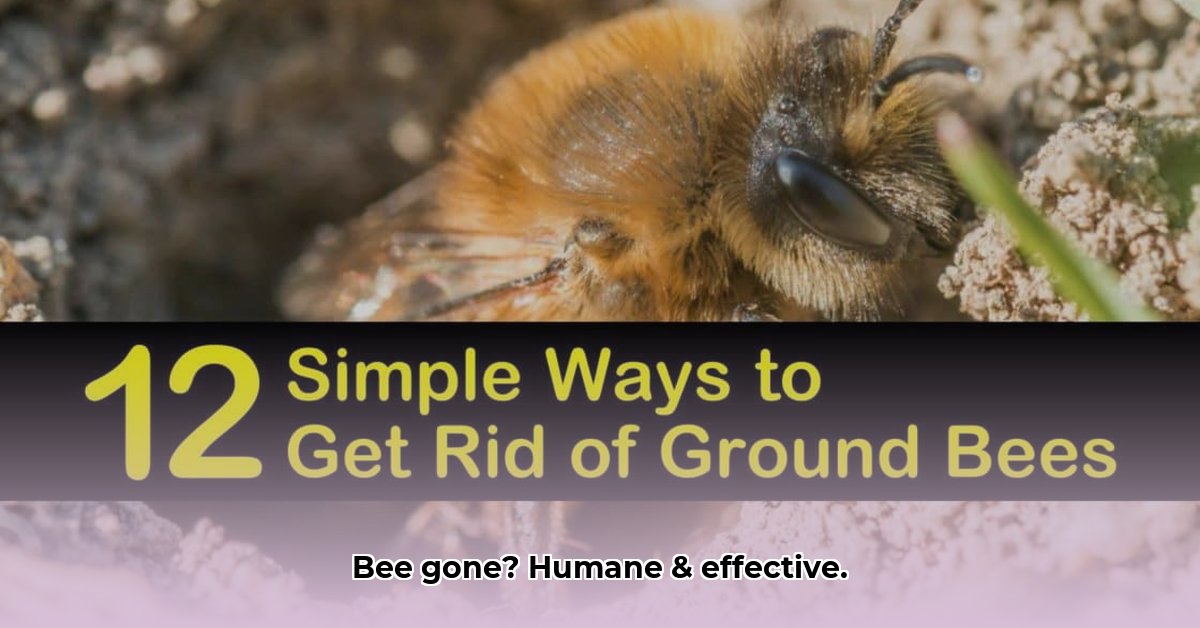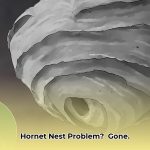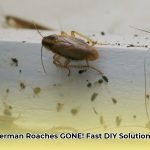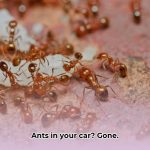Bees are vital pollinators, but their presence near homes can sometimes pose challenges. This guide offers humane and effective strategies for encouraging bees to relocate, emphasizing coexistence and responsible pest management.
Understanding Bee Behavior
Before addressing a bee issue, understanding why bees are attracted to your yard is crucial. Bees seek food (nectar and pollen), water, and nesting sites. If your yard provides these, it’s a bee paradise! Identifying what attracts them is the first step to gently persuading them to move.
Natural Bee Deterrents
Bees have a keen sense of smell, and certain scents can discourage them. These natural deterrents act as a polite “no thank you” signal.
- Plant a Fragrant Fortress: Certain plants naturally repel bees. Cultivating mint, marigolds, eucalyptus, citronella, basil, catnip, chives, garlic, and lemongrass around your home can create a fragrant barrier. Research suggests some bee species find these scents irritating.
- Vinegar Solution: A simple mix of equal parts water and white vinegar, lightly misted on areas where bees congregate, can disrupt their ability to detect flower scents.
- Mothballs (Use with Caution): The strong scent of mothballs can deter bees. Place a few inside a breathable bag (like an old sock) and hang it near the problem area. Caution: Mothballs can be harmful to pets and children; never leave them exposed.
- Cucumber Peel Experiment: Placing cucumber peels in aluminum pie tins can create a scent bees dislike. The effectiveness of this method is still being researched and may vary depending on the bee species.
- Essential Oil Options: Some experts believe that essential oils like citronella, clove, eucalyptus, peppermint, tea tree, and lavender can disrupt bee navigation. Dilute these oils with water and spray them around affected areas.
- Kitchen Cupboard Repellents: Cinnamon, garlic powder, and cayenne pepper sprinkled around areas may act as mild irritants that bees tend to avoid. However, this may not be a long-term solution and may need frequent reapplication.
Making Your Yard Less Appealing
Sometimes, unintentional actions create a bee haven. Simple changes can make your yard less inviting:
- Cover Sweet Treats: Keep sugary drinks and food covered, especially outdoors. Clean spills promptly.
- Minimize Floral Scents: Avoid strong perfumes, scented lotions, and heavily fragrant flowers in bee-prone areas.
- Strategic Color Choices: Bees are drawn to bright colors, especially blue, violet, and green. Consider alternative colors for outdoor décor.
- Water Management: Eliminate standing water sources. Provide a shallow dish of water with pebbles in a remote area as an alternative bee watering station.
- Secure Trash: Keep garbage cans tightly sealed, especially those with food scraps.
When to Call a Professional
For large hives, bee allergies, or nests in difficult-to-reach locations, contact a professional bee removal service or a local beekeeper. They have the expertise and equipment for safe and humane hive relocation.
Finding a Beekeeper
Local beekeeping associations, online business directories, and community networks (neighbors, friends, local gardening groups) are excellent resources for finding beekeepers specializing in swarm removal.
Key Questions to Ask a Beekeeper:
- Do you specialize in relocating honeybees?
- Can you describe your bee removal process?
- What is the estimated cost?
- Do you offer a guarantee against re-infestation?
- Are you licensed and insured?
DIY Bee Removal (Proceed with Extreme Caution)
For small, accessible nests, and only if you feel completely confident and are not allergic, you can try these natural methods, always wearing protective gear:
- Observe and Plan: Observe bee activity for a few days to understand flight patterns and identify the best time to approach (late evening or early morning).
- Smoking (Use with Extreme Caution): Gently smoking the nest with a bee smoker (available from beekeeping supply stores) can encourage bees to leave. Follow instructions carefully and never use open flames.
- Natural Deterrents: Placing cinnamon sticks, peppermint oil, or bowls of vinegar near the nest might help, but may be less effective with established colonies.
Important: Never seal a bee entrance! This can create a dangerous situation.
Post-Removal and Prevention
After bee removal, carefully remove the old nest and seal any cracks or holes to prevent re-infestation. To prevent future nests, eliminate standing water, secure sugary food sources, and consider planting bee-repelling plants. Providing a bee house away from living areas can also encourage bees to nest elsewhere.
Identifying Bee Types
Different bees have different nesting habits. Identifying the type of bee helps determine the appropriate course of action:
- Honeybees: Fuzzy, golden-brown, often seen around flowers; nest in cavities or hang hives from branches.
- Carpenter Bees: Larger, darker, bore into wood.
- Bumblebees: Round, fuzzy, with distinct yellow and black markings; typically nest underground.
- Wasps: Slender, smooth-bodied, can be more aggressive; nests vary (papery umbrellas, mud-like structures).
Protecting Yourself
Always wear protective clothing when dealing with bees. Work during less active periods (night or early morning). Have antihistamine cream or a first-aid kit readily available. If stung, remove the stinger immediately (if present – only honeybees leave stingers) and apply ice. Seek immediate medical attention for any allergic reactions.
By understanding bee behavior and using these methods, you can coexist peacefully with these essential pollinators while maintaining a bee-free zone around your home. Ongoing research continues to enhance our understanding of bee behavior and the effectiveness of various deterrent methods. Remember, it’s about finding a harmonious balance between our needs and the vital role bees play in our ecosystem.
- How to Get Rid of Mushrooms in Your Lawn: A Complete Guide - April 24, 2025
- How to Get Rid of Ground Hornets: A Safe and Effective Guide to Eliminating Nests - April 24, 2025
- How to Get Rid of German Roaches Fast: DIY Methods for Quick Control - April 24, 2025










